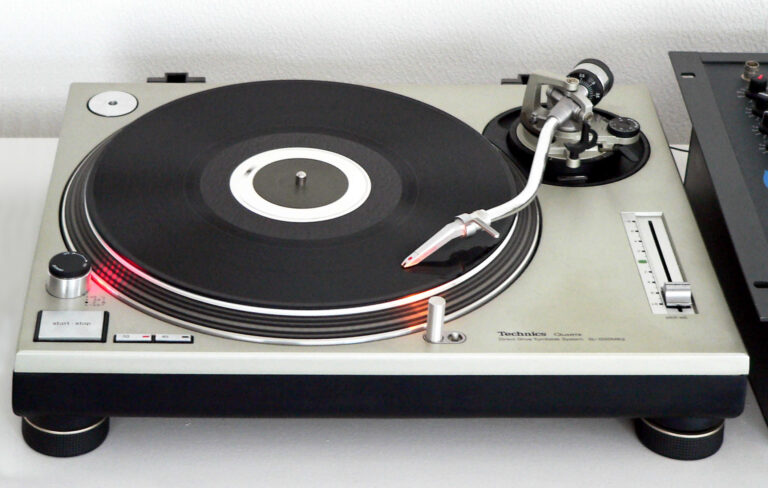
In the ever-evolving landscape of technology, it’s easy to overlook the foundational innovations that paved the way for today’s advancements. Many of the devices and systems we now take for granted have their origins in old technology. Understanding the journey from past inventions to modern marvels not only offers insight into the progress we’ve made but also highlights the enduring influence of old technology on contemporary life.

List of Old Technology
Before delving into how these old technologies have shaped modern inventions, let’s first explore a curated list of notable old technologies that have had a significant impact:
| Old Technology | Time Period | Modern Equivalent / Influence |
| Wheel | Circa 3500 BCE | Cars, bicycles, machinery |
| Printing Press | 1440 | Digital printing, e-books |
| Telegraph | 1830s | Internet, email, messaging apps |
| Telephone | 1876 | Smartphones, VoIP |
| Typewriter | 1868 | Computers, keyboards |
| Steam Engine | 1712 | Internal combustion engines, electric motors |
| Radio | 1895 | Television, Wi-Fi, podcasts |
| Phonograph | 1877 | Digital music, streaming |
| Film Camera | 1888 | Digital cameras, video streaming |
| Mechanical Calculator | 1642 | Computers, calculators |
| Vinyl Records | 1877 | Digital music, streaming |
| Handwritten Letters | Ancient times | Email, instant messaging |
| Gas Lamps | 1790s | Electric lighting |
| Punch Cards | 1890s | Data storage, programming |
Old Technology Still in Use
Despite the rapid advancement of technology, some old devices and systems continue to serve specific purposes today. Their enduring presence is a testament to their reliability, simplicity, or niche applications. Here’s a look at some old technologies that are still in use:
| Old Technology | Current Use | Reason for Persistence |
| Wheel | Vehicles, machinery | Fundamental to transportation and mechanics |
| Mechanical Watches | Fashion, backup timekeeping | Durability and aesthetic appeal |
| Vinyl Records | Music enthusiasts, DJs | Superior analog sound quality |
| Typewriters | Specialty writing, collectors | Mechanical reliability and tactile experience |
| Fax Machines | Legal, medical, business communication | Security and regulatory compliance |
| Landline Telephones | Rural or secure communication | Reliability during power outages |
| Gas Lamps | Historic districts, outdoor decor | Decorative and functional |
| Chalkboards | Schools, training centers | Low cost, durable, interactive |
| Steam Trains | Heritage tourism | Cultural and historical value |
Why Do Old Technologies Disappear?
The disappearance of old technologies is often a result of several factors:
- Technological Advancements: Newer technologies often offer improved performance, efficiency, and convenience, leading to the obsolescence of older systems.
- Cost Efficiency: Maintaining or producing outdated technologies can become economically unfeasible as more advanced alternatives become available.
- Environmental Considerations: Older technologies may be less energy-efficient or environmentally friendly, prompting a shift towards greener solutions.
- Changing Consumer Preferences: As societal needs and preferences evolve, technologies that no longer align with current demands may fade into obscurity.
- Regulatory Changes: New laws and regulations can render certain technologies obsolete, especially if they no longer meet safety or environmental standards.
Understanding these factors helps us appreciate the natural progression of technology and the reasons behind the adoption of new innovations.
How Old Technology Shaped Modern Inventions
Old technologies have laid the groundwork for many of today’s innovations. By building upon the principles and concepts established in the past, modern inventions have evolved to meet contemporary needs. Here are some examples of how old technology has shaped modern inventions:

1. Landline Phones Became Smartphones
The evolution from landline phones to smartphones is a prime example of how old technology has influenced modern inventions. Initially, landline phones were stationary devices used solely for voice communication. Over time, advancements in wireless technology, miniaturization, and digital processing led to the development of mobile phones. These devices not only retained the voice communication feature but also incorporated functionalities like text messaging, internet browsing, and multimedia capabilities, culminating in the smartphones we use today.

2. Typewriters Inspired Keyboards
Typewriters were once the primary tool for writing documents. Their design and functionality laid the foundation for modern computer keyboards. The QWERTY layout, initially developed to prevent typewriter jams, remains the standard keyboard layout today. While the medium has shifted from mechanical typewriters to digital devices, the core design principles have endured, highlighting how old technology continues to influence modern inventions.

3. Floppy Disks Led to Cloud Storage
Floppy disks were among the earliest portable storage devices, allowing users to save and transfer data. As storage needs grew and technology advanced, floppy disks became obsolete, replaced by more efficient solutions like USB drives and cloud storage. The transition from physical to digital storage reflects the ongoing trend of enhancing convenience and accessibility in data management.
4. Steam Engines Paved the Way for Modern Transportation
The invention of the steam engine revolutionized transportation and industry. It enabled the development of steamships and locomotives, which drastically reduced travel time and facilitated the movement of goods. These advancements laid the foundation for modern transportation systems, including automobiles and airplanes, demonstrating how old technology has shaped the future of innovation.
5. The Printing Press Sparked the Information Age
In the 15th century, Johannes Gutenberg’s creation of the printing press transformed the way information was shared and made knowledge more widely accessible. By making books more accessible and affordable, it democratized knowledge and education. This shift paved the way for the information age, where digital platforms continue to expand access to information globally.
What Old Technology Will Disappear Next?
As technology continues to advance, certain old technologies are on the brink of obsolescence. Predicting which technologies will disappear next involves analyzing current trends and societal needs. Some candidates include:
- Landline Telephones: With the widespread use of mobile phones and internet-based communication, traditional landline phones are becoming less common.
- Fax Machines: Digital communication methods like email and secure document sharing have rendered fax machines largely obsolete.
- Incandescent Light Bulbs: Energy-efficient alternatives like LED and CFL bulbs are replacing incandescent bulbs due to their lower energy consumption and longer lifespan.
- Physical Media (CDs, DVDs): Streaming services and digital downloads have reduced the demand for physical media, leading to their decline.
- Cash: The rise of digital payment methods and mobile wallets is gradually decreasing the use of physical cash.
While these technologies may not disappear entirely in the near future, their prevalence is diminishing as newer, more efficient alternatives become mainstream.
Key Takeaways
- Old technologies have laid the foundation for modern innovations, influencing design, functionality, and user experience.
- The evolution from old to new technology is driven by the pursuit of efficiency, convenience, and sustainability.
- Understanding the history of technology helps us appreciate the progress we’ve made and the innovations yet to come.
- While some old technologies fade into obsolescence, others adapt and continue to serve specific purposes.
- The cycle of innovation is ongoing, with each new advancement building upon the lessons and achievements of the past.
FAQs
Q1: How have old technologies influenced modern inventions?
A1: Old technologies have provided the foundational principles and designs upon which modern inventions are built. For instance, the QWERTY keyboard layout from typewriters is still used in today’s computer keyboards.
Q2: Why do some old technologies still remain in use?
A2: Some old technologies remain in use due to their reliability, simplicity, or specific applications that newer technologies haven’t fully replaced.
Q3: What factors contribute to the obsolescence of old technologies?
A3: Factors include technological advancements, cost efficiency, environmental considerations, changing consumer preferences, and regulatory changes.
Q4: Can old technologies inspire new innovations?
A4: Yes, many modern innovations are inspired by or built upon older technologies, demonstrating the cyclical nature of technological advancement.
Q5: What are some examples of old technologies that have disappeared?
A5: Examples include floppy disks, pagers, and VHS tapes, which have been replaced by more efficient and convenient alternatives.





